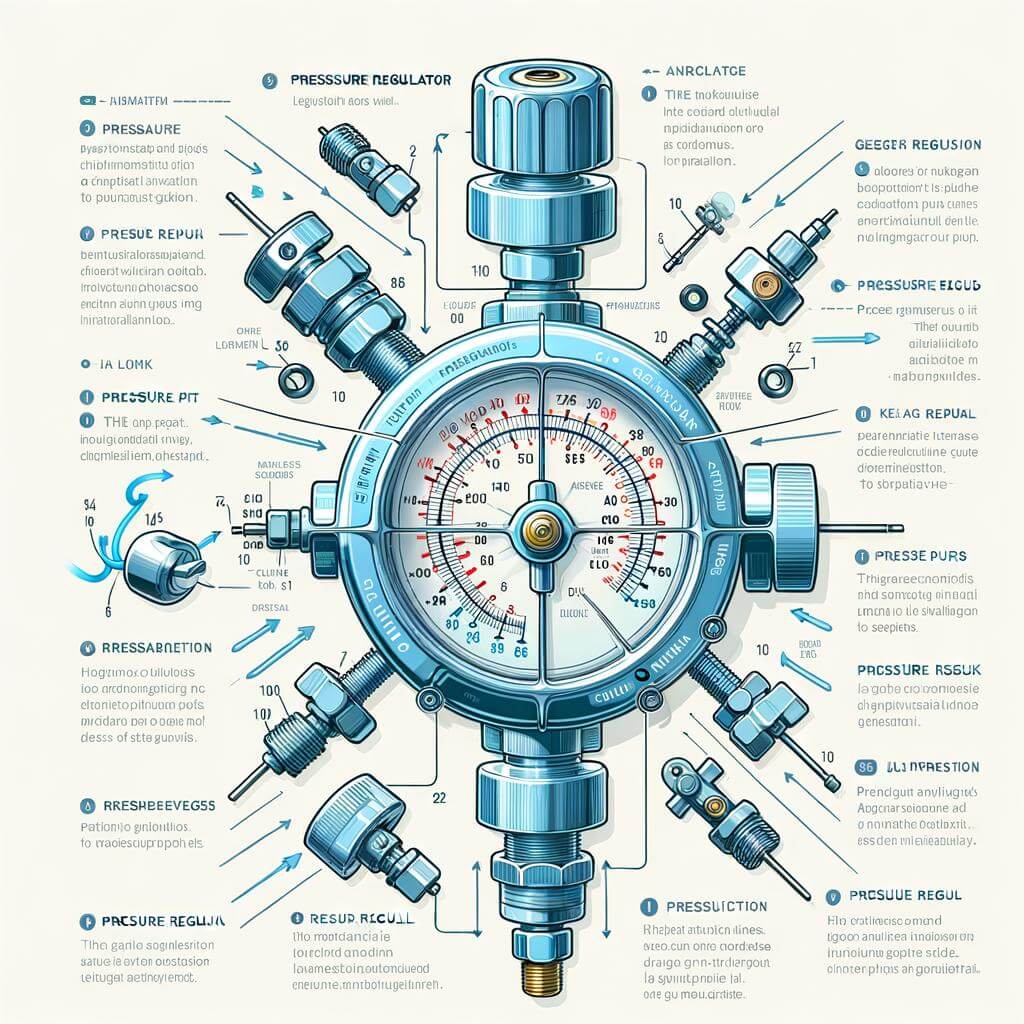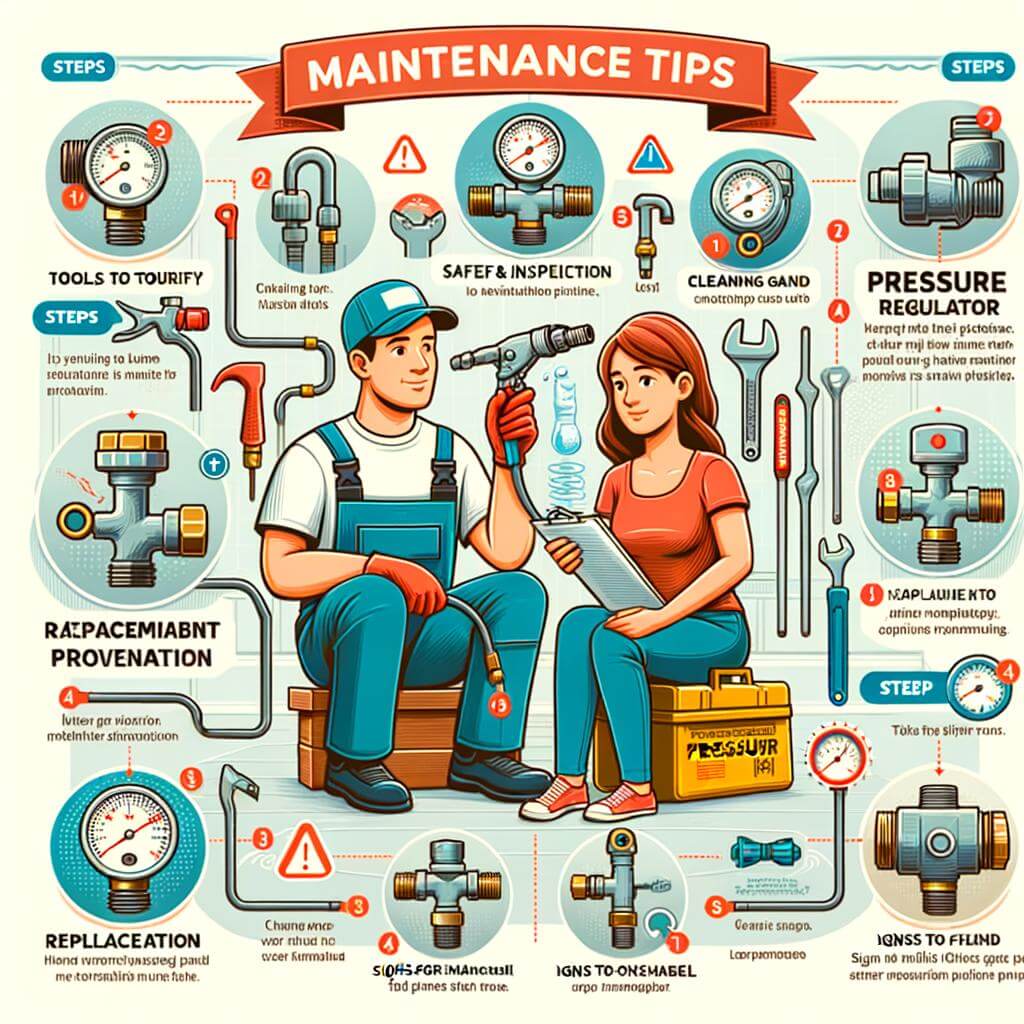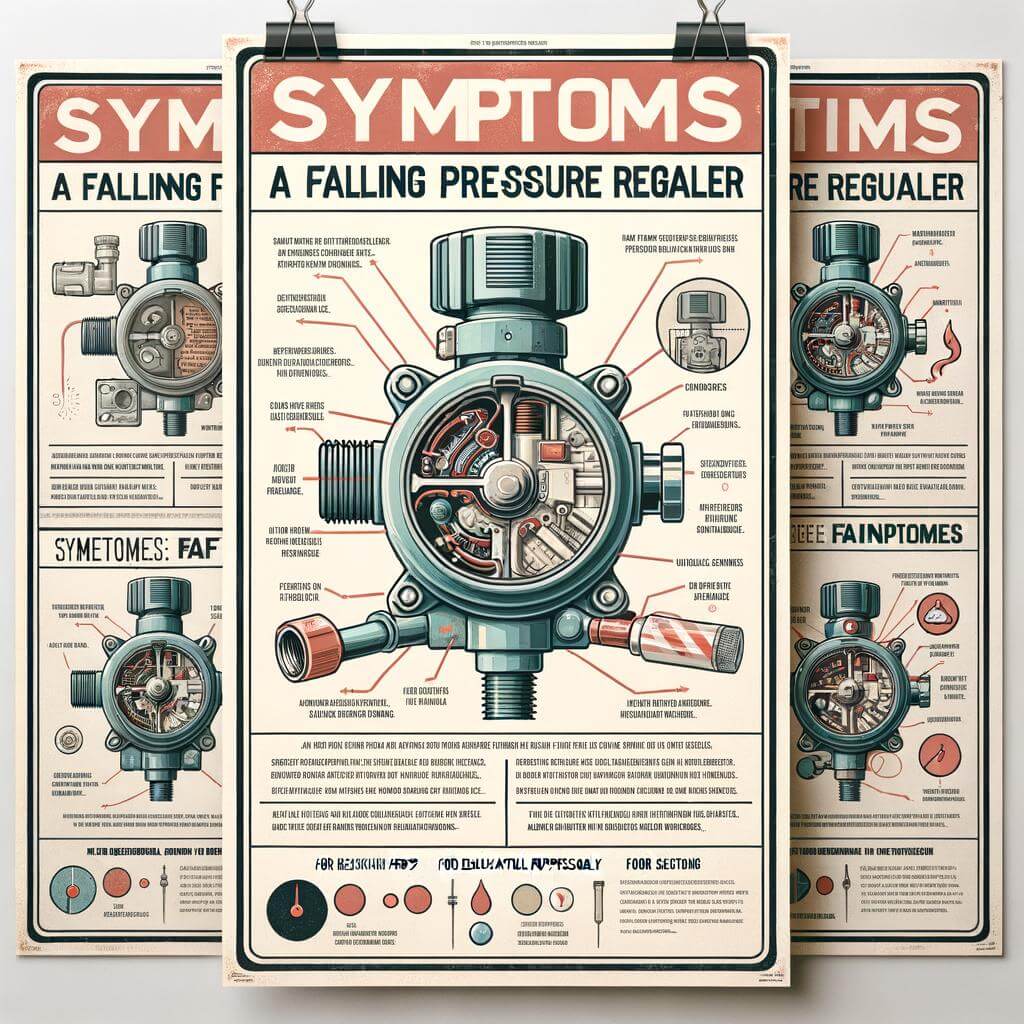Welcome! In this post, we’ll demystify the role of pressure regulators in your domestic plumbing system. Pressure regulators are important components that play a pivotal role in maintaining the proper water pressure in your home’s plumbing system. Understanding how they work can save you from costly home repairs and potential damages due to wrong water pressure. Through our expert advice and factual explanation, this post will guide you in understanding its importance, how it can benefit your plumbing system, help maintain the longevity of your appliances and moreover, create a safer home environment. So, stay tuned, as we unravel the mystery behind pressure regulators in an easy, informative and useful way!
Understanding Pressure Regulators and their Importance in Home Plumbing
The essence of smooth running plumbing in your home may very well be down to an unsung hero – the pressure regulator. This device controls the water pressure entering your property, ensuring it remains at a safe and consistent level. High water pressure can place unnecessary strain on pipes and fixtures, potentially leading to leaks or even ruptures. On the other hand, low water pressure can lead to weak water flow, making simple tasks like showering or cleaning frustratingly ineffective. This is why having a properly functioning pressure regulator is vital for your home’s plumbing system.
In terms of its design, a pressure regulator is typically composed of three main components: the loading mechanism, usually a spring; the measuring element, often a diaphragm or piston; and the controlling element, which could be a valve plug or similar part. The loading mechanism applies a force, the measuring element gauges the process pressure, and the controlling element regulates this pressure. Below is a brief table breaking down each part and its function:
| Component | Function |
|---|---|
| Loading Mechanism (Spring) | Applies force |
| Measuring Element (Diaphragm/Piston) | Gauges process pressure |
| Controlling Element (Valve plug) | Regulates pressure |
While it’s possible for a homeowner to adjust the water pressure by tweaking the pressure regulator, it’s a delicate balancing act which is often better left to a professional. Misadjusting can lead to damage in the long run. Regular checks and maintenance of your pressure regulator will help to avoid sudden drops or spikes in water pressure and ensure your home plumbing system continues to operate efficiently.
Unveiling the Functionality of Pressure Regulators
In every home plumbing system, the unsung hero often taken for granted is the pressure regulator. This device performs the critical task of controlling and stabilizing the water pressure in your home. Too high pressure can cause damage to your pipes and appliances, leading to wastage of water and costly repairs. On the other hand, too low pressure will make simple tasks like showering and washing dishes frustratingly slow. Hence, the role of a pressure regulator is vital in maintaining an optimal balance.
Let’s dive deeper to understand precisely how a pressure regulator functions. In the most basic terms, it is a valve that automatically cuts off the flow of a liquid or gas at a certain pressure. The main components of a pressure regulator include:
- Adjusting screw: this is used to set the desired pressure level.
- Spring: it works in conjunction with the adjusting screw to manage pressure.
- Diaphragm: it senses the change in pressure and controls the delivery of water.
When the pressure crosses the set level, the diaphragm restricts the flow of water, thereby reducing the pressure.
| Component | Function |
|---|---|
| Adjusting screw | Sets desired pressure level |
| Spring | Works with adjusting screw for pressure management |
| Diaphragm | Senses pressure change and controls water delivery |
Fundamentally, the pressure regulator ensures that the water pressure in your home is neither too high nor too low, allowing you to have a seamless water usage experience. So next time when you enjoy a perfectly pressured shower or use your appliances without worrying, remember the silent guardian – the pressure regulator!
How Pressure Regulators Protect Your Home Plumbing System
The health of your home’s plumbing system should always be a priority. Pressure regulators play a significant role in maintaining this. They ensure you’re getting just the right amount of water pressure. In the absence of a Pressure Regulator Valve (PRV), there is a high-risk factor of potential damage due to high water pressure. It might not seem problematic initially, but high water pressure can gradually damage pipes, leading to leaks, and thereby necessitating costly repairs.
Types and Benefits of Pressure Regulators Pressure regulators come in various forms such as direct-operated, internally piloted, and externally piloted. Each type has its unique functions, but overall, they guarantee three main benefits:
- Consistent Output Pressure: Regardless of changes in the input pressure or flow rate, a pressure regulator ensures that the output pressure remains consistent.
- Reduced Consumption: A pressure regulator helps reduce water consumption, thus leading to substantial savings on your utility bills over time.
- Prevention of Damage: High water pressure could cause significant damage to your plumbing fixtures. A pressure regulator helps prevent such occurrences.
How They Work Pressure regulators work based on the principle of balances forces. An adjustable spring applies a force on one side of a diaphragm, and the water pressure applies a force on the other side. When the forces are balanced, the pressure drop across the valve’s orifice is constant. If the downstream pressure increases, it pushes up on the bottom of the diaphragm, causing the valve to close slightly, reducing flow and pressure downstream.
| Valve Type | Function |
| Direct-operated | Fast response, suitable for low to moderate flows |
| Internally piloted | Used for larger flows, more accurate control |
| Externally piloted | Most accurate control, used for difficult applications |
Homeowners should consider professional consultation for the correct installation and maintenance of pressure regulators for optimum results. After all, it’s better to prevent damage than incur high repair costs later.
Maintenance Tips for Pressure Regulators in Home Plumbing
Maintaining pressure regulators in your home plumbing system is essential for smooth and hassle-free operations. Pressure regulators play a vital role in reducing the pressure of the water that enters your home through the main water line. This helps to prevent damage to your appliances and plumbing fixtures from high water pressure. However, these valuable components require regular maintenance to function effectively.
Maintenance, consequently, often includes a couple of crucial strategies that you should keep in mind:
- Regular Inspection: Pressure regulators should be inspected at least once a year. Look for any signs of wear and tear, including leaks or rust.
- Pressure Checking: Keep a close eye on your home’s water pressure. If you notice a sudden increase, it could be due to a malfunctioning regulator.
- Replacement: Generally, pressure regulators have a lifespan of anywhere between three to five years. If yours is older than this, it might be time to consider a replacement.
The process of maintaining pressure regulators might seem complicated, but with the right knowledge and tools, it can be a manageable task. Here’s a simple table illustrating the basic tasks along with their respective timelines and possible symptoms indicating a task is due.
| Task | Timeline | Symptoms |
|---|---|---|
| Inspection | Annually | Leaks, rust, sudden increase in water pressure |
| Pressure checking | Monthly | Unexpected changes in water pressure, sudden spike in water bill |
| Replacement | Every 3 – 5 years | Persistent high water pressure, frequent leaks, water hammer |
Maintaining a consistent schedule of pressure regulator maintenance will not only extend the life of your home’s plumbing system but also save you money in the long run. Moreover, it can save you from the hassle of unexpected plumbing issues.

Recognizing Symptoms of A Failing Pressure Regulator
When operating optimally, pressure regulators in your home plumbing system work quietly behind the scenes, managing water flow and pressure. These pivotal components help ensure the right amount of water is delivered to various areas of your home at the right pressure. However, when a pressure regulator starts to fail, it’s critical to identify and address the issue promptly to prevent damage to plumbing fixtures or a potential water hazard. Here are some key symptoms to stay vigilant of:
Unpredictable Water Pressure: If you notice erratic or absurdly high pressure in your water flow one minute, only for it to drop dramatically the next, this could signify a failing pressure regulator. Noisy Pipes: Excessive noise from your pipes, particularly a banging or knocking sound, can also indicate trouble with the pressure regulator. Leaking Faucet: A constantly dripping faucet, even with the taps tightly turned off, could point to pressure issues. Visible Water Damage: Unexplained moisture or visible water damage on walls or ceilings may signal high pressure, causing a leak in your plumbing system.
| Symptom | Explanation |
|---|---|
| Unpredictable Water Pressure | Varied levels of water pressure could indicate a regulator problem. |
| Noisy Pipes | A arising sound from your pipes may denote regulator failure. |
| Leaking Faucet | Persistent dripping despite closing taps may suggest pressure issues. |
| Visible Water Damage | Unexplained moisture or damage might signify high pressure and a potential leak. |
Recognizing these symptoms early on not only mitigates potential damage to plumbing fixtures, but also helps maintain the overall health of your home’s plumbing system. Consider reaching out to professional plumbing services if you suspect a problem with your pressure regulator.

Choosing the Right Pressure Regulator for Your Home Plumbing Needs
The versatility of pressure regulators is key in the domain of home plumbing. These magical devices help to regulate and maintain consistent water pressure in your piping systems, providing an optimal flow rate that allows your appliances and faucets to operate efficiently. We must note that not all pressure regulators are created equal. Each one offers different specs and features tailored to varied needs, thus comprehension of your particular home plumbing needs is crucial in making the right choice.
- Material: Considering the material of the pressure regulator is critical. Brass regulators are durable and resist corrosion, ideal for water systems. On the other hand, stainless steel offers higher affordability.
- Adjustability: Opt for a pressure regulator that allows for adjustments. This gives you the liberty to control the water pressure in different systems according to your specific needs.
- Size: The size of the regulator should be compatible with the size of your plumbing system to ensure maximum efficiency. A mismatch can lead to leaks or erratic water flow.
- Pressure Range: Regulators come with different pressure ranges, and it’s essential to match this with the demands of your home.
Let’s take a glance at some popular pressure regulators suitable for different plumbing needs presented in the below table:
| Material | Adjustability | Size | Pressure Range | |
|---|---|---|---|---|
| Brass | Yes | Medium | 25-75 PSI | |
| Stainless Steel | No | Large | 50-100 PSI | |
| Brass | Yes | Small | 20-50 PSI |
In summary, understanding the unique needs of your household’s plumbing system is the key to selecting the most suitable pressure regulator. Consideration of the material, adjustability, size, and pressure range will steer you to the right choice.
To Wrap It Up
In conclusion, pressure regulators play an instrumental role in safeguarding your plumbing system. They minimize the risk of damage, extend the lifespan of your pipes, and even contribute towards water conservation. It’s important to ensure they are functioning well and to replace them promptly when necessary. Understanding how these devices operate is the first step towards preserving the integrity of your home’s plumbing system. We hope this article has made their importance, functionality, and role in your home clearer. Remember, an optimal plumbing system not only contributes to the essential functioning of your home but also significantly enhances its overall value. Let’s contribute to a healthier, happier home by understanding and caring for every component, including the unsung hero – the pressure regulator. Stay tuned for more helpful plumbing advice and tips from trusted experts. With the right information, we can all become better, more informed homeowners. As always, when you have a problem that needs a professional touch, don’t hesitate to reach out to a local, licensed plumber. Your home is one of your most valuable assets, treat it with the respect it deserves.




